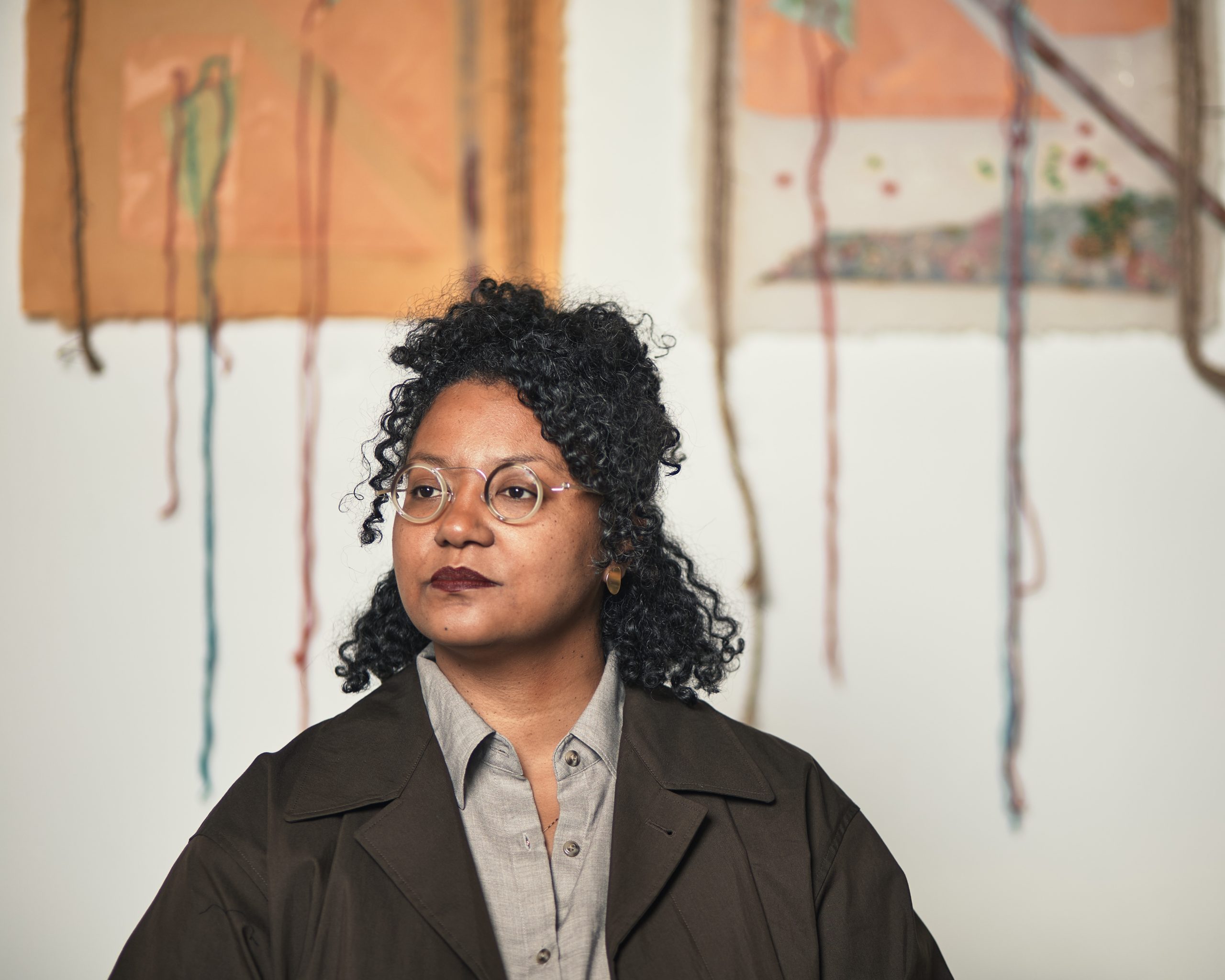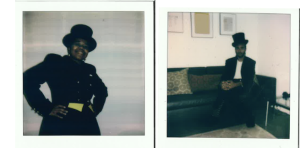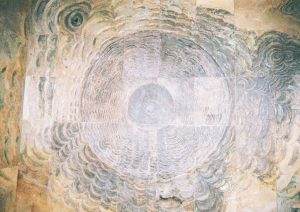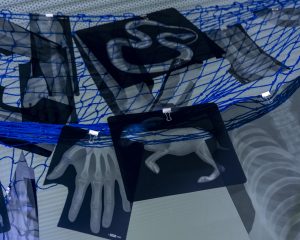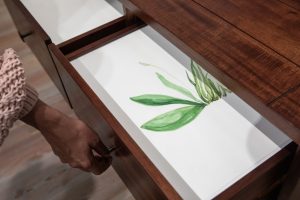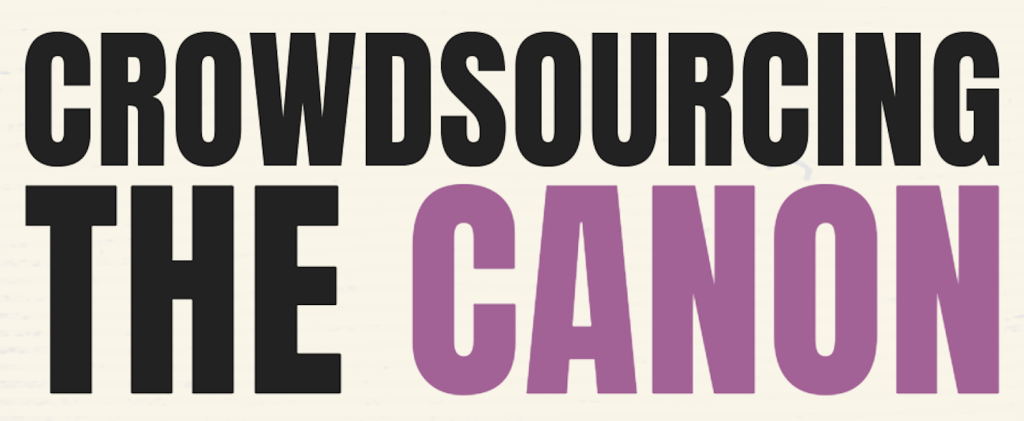
This article is part of a partnership between Sixty Inches from Center and Black Lunch Table (BLT) partnership, Crowdsourcing the Canon—an editorial series diving into the lives and practices of Black artists based in the Midwest, especially those whose Wikipedia pages lack sufficient citations.
Your absence distributed itself
like an invitation.
– Excerpt from Rita Dove’s “The Wake”
All etymologies of the word “wake” came to the fore as I traveled through “Currents 124: Crystal Z Campbell” (October 25, 2024–March 9, 2025) at the St. Louis Art Museum. While the name, “Currents 124,” is merely a convention of the endowed program at the St. Louis Art Museum under which a selection of artists exhibit, it begets the elemental and sensitive flow in this new body of charged works.
Wake is considered a polysemous word. It is a noun meaning “a vigil before burial” and a verb meaning “to become or cause to become awake”. It also has a secondary noun related to the disturbance left by something moving through a liquid. Like Rita Dove, Christina Sharpe employs “wake” as both a noun and a verb. The opening line of Rita Dove’s poem, “The Wake,” bellowed through my mind as the sentience and doldrums of the sprawling materials in Campbell’s works lured me in, revealing each object as spirited and somatic. Where Dove notes the absence of a dear loved one and the grief that pervades at their wake and beyond, Campbell cements the absence of (under)loved histories through a spectral quality that approaches clustering illusions through the language of abstraction.
Meditating on abstraction and its role in Black expression, Campbell shares, “Abstraction has not only been fundamental to Black survival, but is also a valid form of telling. In this show, I’ve planted a tiny image of David Fagen alongside the touch-sensitive mimosa pudica plant. He was a Black man enlisted in the US military who defected in the Philippines and began fighting against the US against colonialism, becoming a captain in the Philippine Revolutionary Army. His story is an important one for Black and Asian anti-colonial solidarities. I use abstraction as form and content because it affords me the space for history, rumor, and the imaginary to shapeshift and land.” This reminds us that stories hiding in plain sight are worth telling, re-telling, elaborating, and stretching towards the outermost edge of possibility. Embellishment and re-articulation are seen as paramountly connected to strategies of fugitivity, Black survival, and dialect building. A cadence is produced. And a folktale circulates. A site for subterfuge becomes a necessary point on a continuum of resistance.
Image: Crystal Z Campbell, “Balat,” 2024. Digital Collage on Suede, Grommets, Sisal. A concave circular work that’s tan, black, green, and turquoise throughout with stringed spokes threaded between the piece and anchored to the wall. Photo Credit: St. Louis Art Museum. Courtesy of Crystal Z Campbell.
“Currents 124: Crystal Z Campbell” is an exhibition featuring oneiric memories, cartographic family roots, and subversive crafts that offer viewers active positions of journeying, reflection, and searching. Through the careful selection of physical and archival materials, the exhibition brought to the forefront nuanced themes of colonial extraction and its implications for not only the world as humans inhabit it, but also the repercussions that echo throughout nature and the natural world. Campbell’s “embedding” techniques are suspension techniques; a complex methodology reliant on abstraction as a tool of invitation and unexpected encounters, where ambiguity becomes apparent and excision becomes touchstone—a tale of manifestation. Extensively, Campbell’s works exercise absence as constituting a long-form, multimodal experiment in autonomous poetics. Public secrets and the underloved are frameworks of investigation that lead Campbell’s quest for the amorphous, ever-evolving, plentifulness of absence. Their new body of work integrates dissected manila envelopes, gossamers of abaca paper, curvilinear scientific glass forms, and fibrous ropes that, individually, recall beautiful and devastating histories, but together unify their material presence as “skins” that invite the viewer into an active and pervasive dialogue with nuanced interrogations of colonial histories that live just below the surface.
Manila envelopes are a significant material in the interrogation of colonial histories. Campbell’s relationship to the material is shaped by being born to a Black military father from Missouri, formerly stationed in the Philippines, and a Filipinx/Chinese mother from the archipelago, who both retired from the US Postal Service. Campbell, born in Prince George’s County, MD and now living between New York and Oklahoma, has dedicated several years to unearthing the intersections between the United States Postal System (USPS) and the US Military through the lens of Filipinx and Black histories. In 2022, Campbell was awarded a Creative Capital Grant for “Post Masters,” an experimental film, performance, painting, and publication project that highlights this work. Campbell notes the once ubiquitous nature of manila envelopes in daily life and how the subtle disappearance of this specific material coincides with its severed connection to colonial and trade histories. “The envelopes were vessels for important pieces of a bureaucratic system but were not meant to be looked at or held in high regard,” Campbell says. They manipulate the direct lineages of the Manila envelope using abaca paper and Manila rope in several abstract paper collages created during an exploratory papermaking residency with Dieu Donné.
Abaca paper, also known as Manila paper, has a rich and horrific history tied to the Philippines, where the abaca plant, Musa textilis, is native. In collaboration with Tatiana Ginsberg, the abstract paper collages are layered, folded, stretched, and transformed, where abaca operates as a skin that holds fragmentation with a gentle strength. The worlds leading supplier of Abaca, the Philippine abaca industry, is wrought with ghosts of US colonization and militarization. Campbell elaborates on the historical significance and strife of Manila envelopes in our imperialist history; “I’ve been thinking about how my lived presence stems from histories of imperialism, militarism, and colonialism. These modes of labor are part of a much larger history, but are reinforced by banal nationalism that plays out with things like flags and stamps. But I’ve always been fascinated by envelopes as concepts and objects. Enveloping or embedding is how I’ve been trying to formulate some components of the US colonization of the Philippines.”
Campbell’s collages visually recall the poignant paperworks of Melvin Edwards made at the same institution, Dieu Donné, more than twenty years prior. Specifically, I am reminded of Edwards’s “Fragments and Shadows” and the visceral interactions with the materials. With Edwards, introducing cotton and linen together provoked a metaphorical and literal tension between the materials, creating striking silhouette stencil images that signaled impressions of complicated histories left behind, achieved using the delicate “blowout” technique. Campbell embeds mixed materials into their paper collages, refracting abaca materials in various formats and enunciations. Manila envelopes, manila rope, and manila paper become substrates of the same archival material, which is Campbell’s attempt at hyper-focused attention as a form of care and restoration for erased and obscured histories.
Another epidermis-like material applied throughout the exhibition is a series of glass works. As a strategic and protective camouflage material, glass becomes profoundly apparent and provocative. “These latest glass pieces actually came out of some archival trips I was doing with students for a class I devised, called Artists in the Archive. In one visit, we saw some apothecary vessels, and those forms made a deep impression on me.” Alongside students, Campbell learned about the chronology of the vessels and how their aphonic presence signaled to people without reading literacy that specific storehouses were dwellings of healing and pain relief. On an alchemical level, the glass forms offer similar codes of relief, refuge, or breath within an institution such as the Saint Louis Art Museum, which was built for the 1904 Louisiana Purchase Exhibition, also known as the St. Louis World’s Fair. The exhibition took place a few years after the US colonized the Philippines, and the living exhibit of Filipinos brought to the fair was the largest at the expo. Noting this startling history, the glassworks were placed throughout the exhibition as intuitive beacons of protection, shielding Campbell’s surrounding attempts at the unfinished narratives that surfaced through years of research.
Campbell’s provocative practice is inside and outside of it. It being the wake work of constructing freedom dreams laced with the spirit of objects passed through many hands and histories. From apothecary vessels pantomiming reliquaries and memory jugs to the gestural and literal role of abaca, “Currents 124: Crystal Z Campbell” made it clear that omissions of history are dangerous. These mechanisms are often purposeful and decisive to scrub history’s tenuous moments. I left the exhibition ruminating on the role of gatekeeping and the practice of strategic camouflage. I wonder, what is our responsibility in retelling the histories that have been erased and obscured? For me, it becomes less about the state of the telling and more about its unending dynamism—there is no laying to rest the specters of absence.
* * *
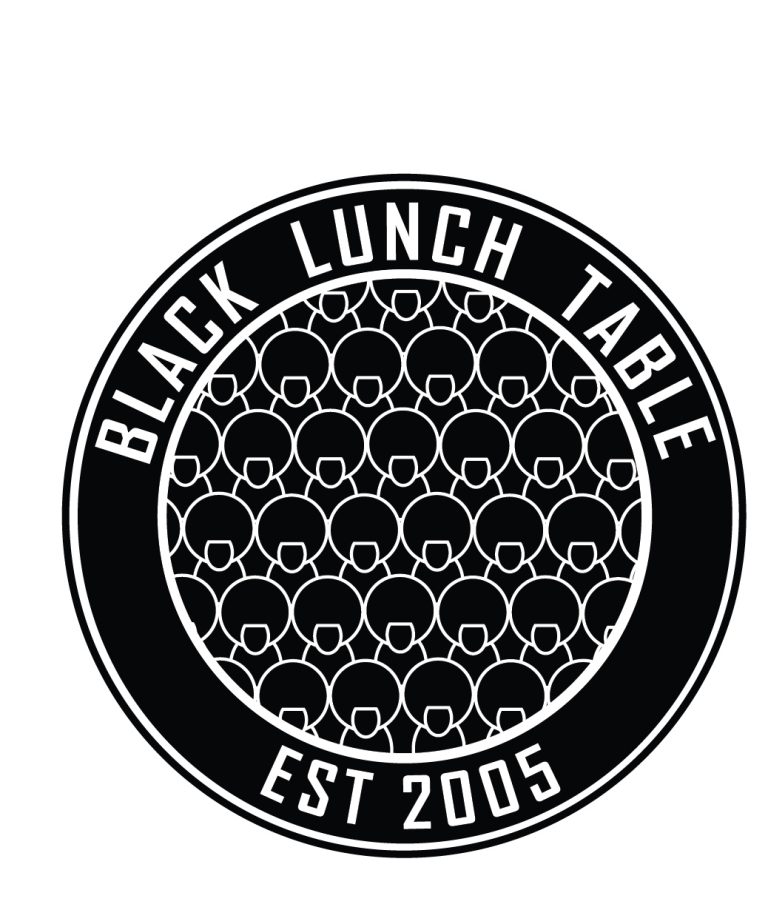
Black Lunch Table (BLT) is a radical archiving project. Their mission is to build a more complete understanding of cultural history by illuminating the stories of Black people and our shared stake in the world. They envision a future in which all of our histories are recorded and valued.

About the Author: isra rene is a curator of care weaving webs of dreams tufted by our inherent connections of love, vulnerability, and care.
